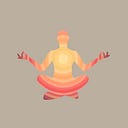What Is Yoga?
Even though probably every person has heard of yoga and has seen multiple pictures of people doing crazy postures on social media — often it remains unclear what yoga actually is. Therefore, I will try to shed some light into the dark.
The word Yoga is derived from Sanskrit and it can be translated into union. Yoga is a thousands of years old Indian mind and body practice, a philosophy, which throughout time developed into different directions. In the Western world, we are most aware of the yoga positions Asanas. I often meet people who define yoga simply as stretching exercises. However, yoga is so much more. In addition to the physical exercises, all kinds of mental aspects play a fundamental role.
To explain this combination of physical exercises and mental aspects, I like to refer to the eight limbs of yoga, which Patanjalis defined in the Yoga Sutras. Patanjali was an Indian scholar and author of the Yoga Sutra, and the Yoga Sutra is the classic guide of yoga. And even if yoga, as already mentioned, has developed in multiple directions, I like to go back to the origin, because I think that this is the best way to understand the core of the whole concept.
The eight limbs of Yoga are as follows:
- Yama: The Yamas are the ethical rules in Hinduism, that tell what is morally wrong, thus what one should not do. According to Patanjali the things one should not do and ways one should not behave are as follows: Violence and harm towards other living beings, falseness, stealing, impurity, and avarice.
- Niyama: The Niyama includes the virtuous habits one should adopt, which are purity and clearness of mind, contentment, and acceptance of others, persistence and self-discipline, self-reflection, and commitment to Ishvara (personal god).
- Asana: Asana is probably the most known aspect of yoga in the Western world — The Asanas are the physical postures of yoga.
- Pranayama: Prana (Sanskrit: breath) and Yama (Sanskrit: restraint) is the practice of controlling the breath.
- Pratyahara: The word Pratyahara consists of the two Sanskrit words Prati (Sanskrit: against) and Ahara (Sanskrit: bring near). After the first four mentioned limbs, Pratyahara is the first limb that moves away from perfecting the external forms, towards perfecting the yogi’s inner state. It’s the process of closing one’s mind processes to the sensory world, to stop being controlled by the external world and finding freedom in one’s inner world.
- Dharana: Dharana means concentration and one-pointed focus. Ones mind should not be drifting and changing the topic continuously.
- Dhyana: Dhyana means reflection in Sanskrit. Whatever the yogi has focused on previously in the Dharana, the yogi should then reflect on with the Dhyana. This should happen in a non-judgemental and non-presumptuous manner. While Dharana is the focus on the state of mind, Dhyana is the processing of the state of mind.
- Samadhi: Samadhi is the meditative consciousness, in which the discursive thinking stops. By following the previous seven paths of the eight limbs, it is said that the yogi can reach the Samadhi, which is seen as a complete liberation and fulfillment.
These were the eight limbs as defined by Patanjali in the yoga sutra. Maybe they inspire you, but I can also imagine, that they scare you off. For many, they seem too spiritual and probably just not very feasible. However, this is the step-by-step instruction to follow. As I said in the beginning, the eight limbs of Patanjali are a good way to explain the classic concept of yoga and I think they can also serve as good inspiration. I myself do not strictly follow these eight limbs, but I do like to orient myself by them. I noticed that throughout the time, I have internalized some of them.
I hope I was able to enlighten you a bit about the world of yoga. Whatever you feel about the eight limbs of Patanjali, just bear in mind, that you can develop your very own yoga routine step-by-step by incorporating the aspects that make you feel good. Yoga is a process.
